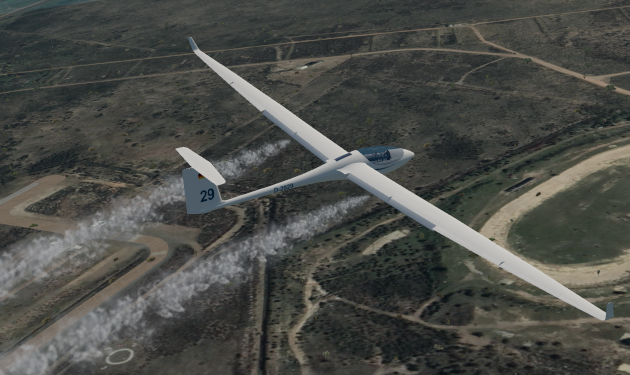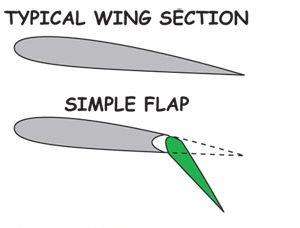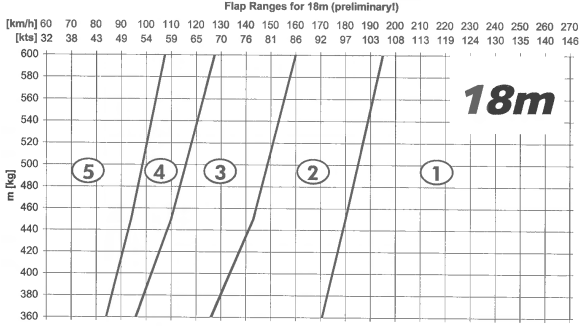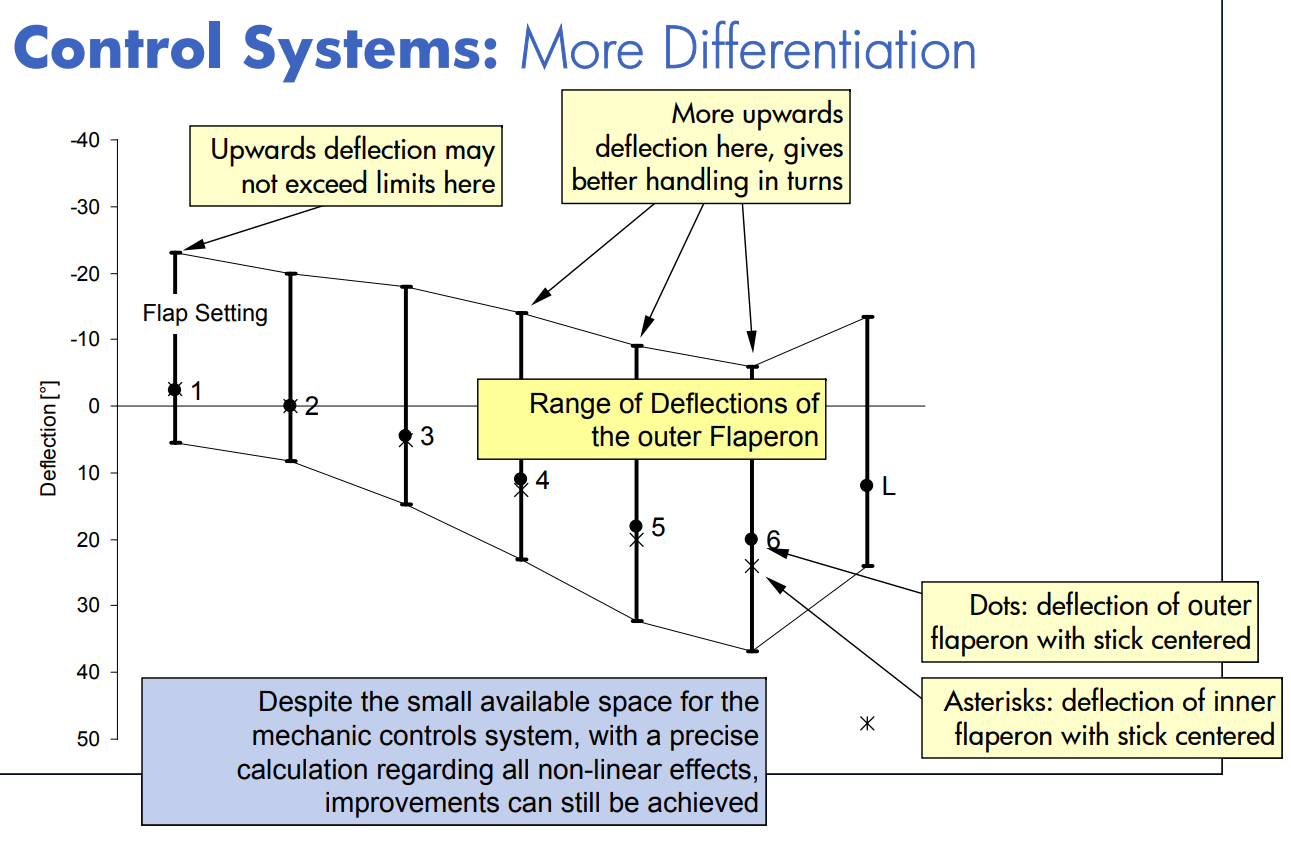

The British Gliding Association provide this thorough general descripion of gliding flaps.
As with the images below, flaps are designed to hinge down from the trailing edge of the wing and increase the lift and the drag of the main wing. The ASG-29, like most flapped gliders, uses "simple flaps" and the image at the top of this page shows the flaps deployed in the maximum, "Landing", setting.

The ASG-29 main wing is generally most efficient with the flaps retracted, but in this configuration does not generate enough lift when the glider is flying slowly hence a compromise must be made and positive flaps are needed then. When flying quickly (which is common when soaring an ASG-29) the lift produced by the main wing is slightly more than ideal (causing extra "induced" drag because of this lift) and the ASG-29 has a 'negative' flap setting (with the flaps tilting very slightly upwards) which reduces the lift and drag.
The Schleicher ASG-29 has SEVEN flap settings:
| LAND | Landing. Very large positive flap setting, high-lift, high-drag. |
| 6T, 5T | Thermalling. Medium positive flap settings, high-lift, medium-drag. |
| 4/A | Aerotow, slow cruise. Positive flap setting. Good flight stability for potential launch failure. |
| 3 | Slow Cruise. Small positive flap setting. |
| 2 | Medium Cruise. Zero flap setting. |
| 1 | Fast cruise. Small negative flap setting. Best L/D at most cruising speeds. |
The ASG-29 has a complex flaps/ailerons linkage resulting in'flaperons', i.e. ailerons that operate normally but also move down together to droop with the flaps. In effect the 'central' position of each aileron is adjusted downwards in the direction of the flap deflection, such that the ailerons still operate up/down opposite to each other but have a downward offset providing an additional flap effect. This allows the ASG-29 to have extremely high aspect-ratio flaps, i.e. they are effectively very long and very narrow, with the efficiency benefits that provides.
The table below shows <flap deflection>/<aileron droop> for each flap setting. In positions 1 through 6 the ailerons act as 'flaperons' i.e. droop closely in line with the flaps. However, at flap position L (LAND, 47 degrees), the ailerons revert to a smaller droop (12 degrees) for better roll control. This is accurately modelled in the ASG29_B21, and can be viewed in the external view.

If carrying full ballast, for full control it is important to go into positive flaps promptly as you slow down from cruise. At lower wing loadings the use of positive flap is less critical.

This really is for academic interest only, and I suspect even owners of ASG-29 sailplanes don't know this detail. The actual movement of the ailerons and flaps is slightly more complex - as the flaps come down the range of movement of the ailerons changes slightly asymmetrically up and down. The details were given in the presentation slide below, originally used by Michael Greiner, the designer of the ASG-29. E.g. for the final 'L' position of the flaps you can seen the flap deflection at +47 degrees with the ailerons centered at +12 degrees with a relative deflection movement of about +13 degrees to -26 degrees (equating to +25 degrees and -14 degrees about the wing centerline).
